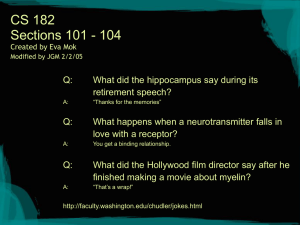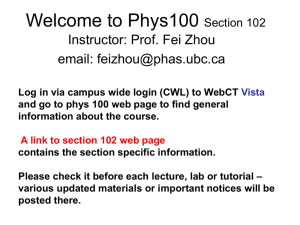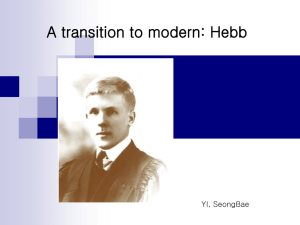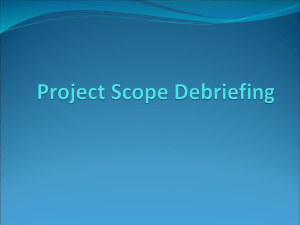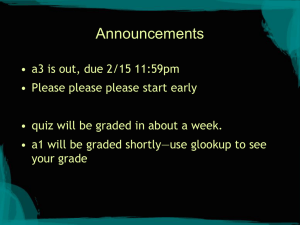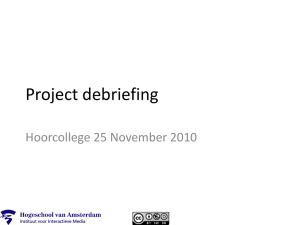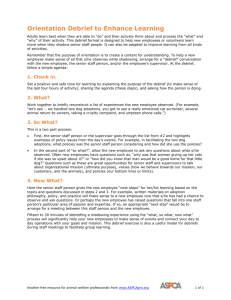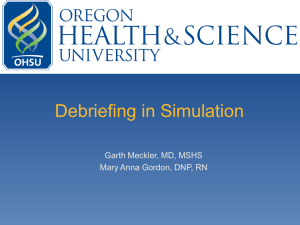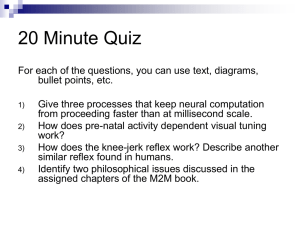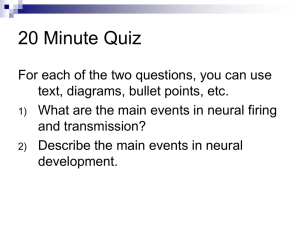Example Debriefing Form
advertisement
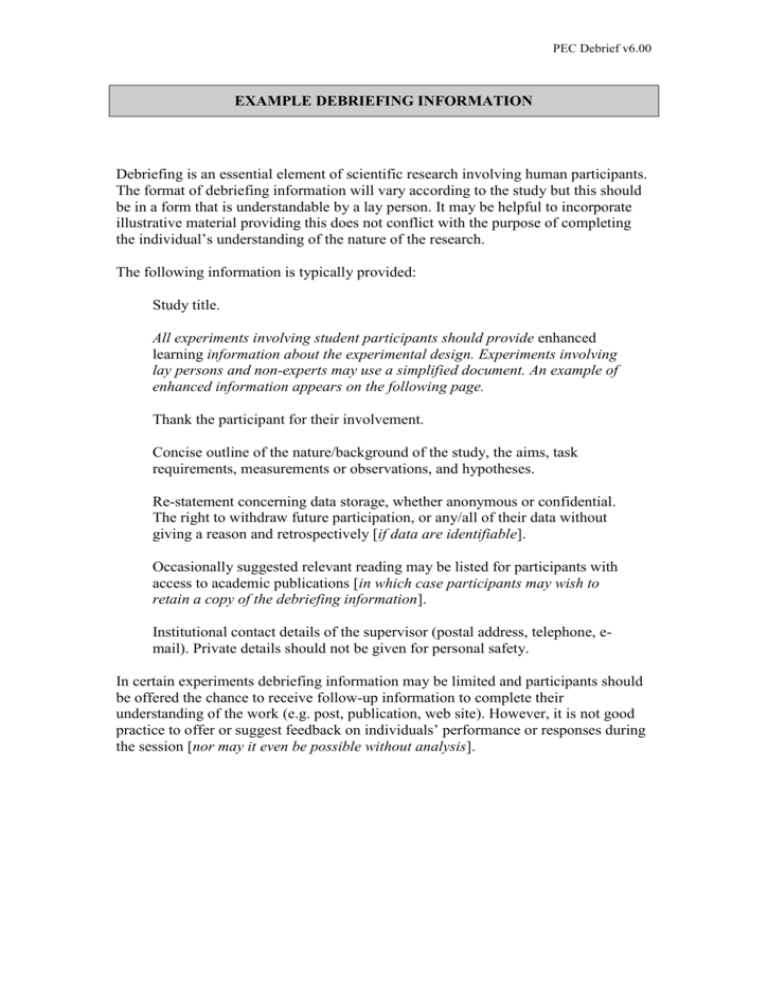
PEC Debrief v6.00 EXAMPLE DEBRIEFING INFORMATION Debriefing is an essential element of scientific research involving human participants. The format of debriefing information will vary according to the study but this should be in a form that is understandable by a lay person. It may be helpful to incorporate illustrative material providing this does not conflict with the purpose of completing the individual’s understanding of the nature of the research. The following information is typically provided: Study title. All experiments involving student participants should provide enhanced learning information about the experimental design. Experiments involving lay persons and non-experts may use a simplified document. An example of enhanced information appears on the following page. Thank the participant for their involvement. Concise outline of the nature/background of the study, the aims, task requirements, measurements or observations, and hypotheses. Re-statement concerning data storage, whether anonymous or confidential. The right to withdraw future participation, or any/all of their data without giving a reason and retrospectively [if data are identifiable]. Occasionally suggested relevant reading may be listed for participants with access to academic publications [in which case participants may wish to retain a copy of the debriefing information]. Institutional contact details of the supervisor (postal address, telephone, email). Private details should not be given for personal safety. In certain experiments debriefing information may be limited and participants should be offered the chance to receive follow-up information to complete their understanding of the work (e.g. post, publication, web site). However, it is not good practice to offer or suggest feedback on individuals’ performance or responses during the session [nor may it even be possible without analysis]. PEC Debrief v6.00 EXPERIMENT DEBRIEF INFORMATION THE HEBB EFFECT IN SERIAL SPATIAL MEMORY This experiment is designed to examine… Previous work has shown that… Here, our interest was in… The experiment employs a within-participants design with two conditions. The independent variable is whether the spatial sequence presented to participants is a Hebb effect sequence (one repeated every third trial) or a novel sequence. The dependent variable is the percentage of a sequence correctly recalled by a participant on each trial. The purpose of the statistical analysis is to determine whether the repeated sequence stimuli produce significantly greater learning than the control stimuli. Because we are looking for an implicit memory effect any participants who indicate that they were explicitly aware of the repeated sequence will be excluded from the analysis. For each participant we will calculate the mean percentage recalled for the Hebb sequences and for the novel trials immediately preceding each Hebb sequence. We will then conduct a repeated measures t-test across all thirty participants (minus any exclusions) comparing the percentage scores for the Hebb sequence against the percentage scores for the control sequences. If the experimental hypothesis is supported there will be a significant difference between both conditions. The null hypothesis is that there will be no significant difference. Thank you for your time… Data… Contact… Further Reading Couture, M., & Tremblay, S. (2006). Exploring the characteristics of the visuospatial Hebb repetition effect. Memory and Cognition, 34(8), 1720-1729.
